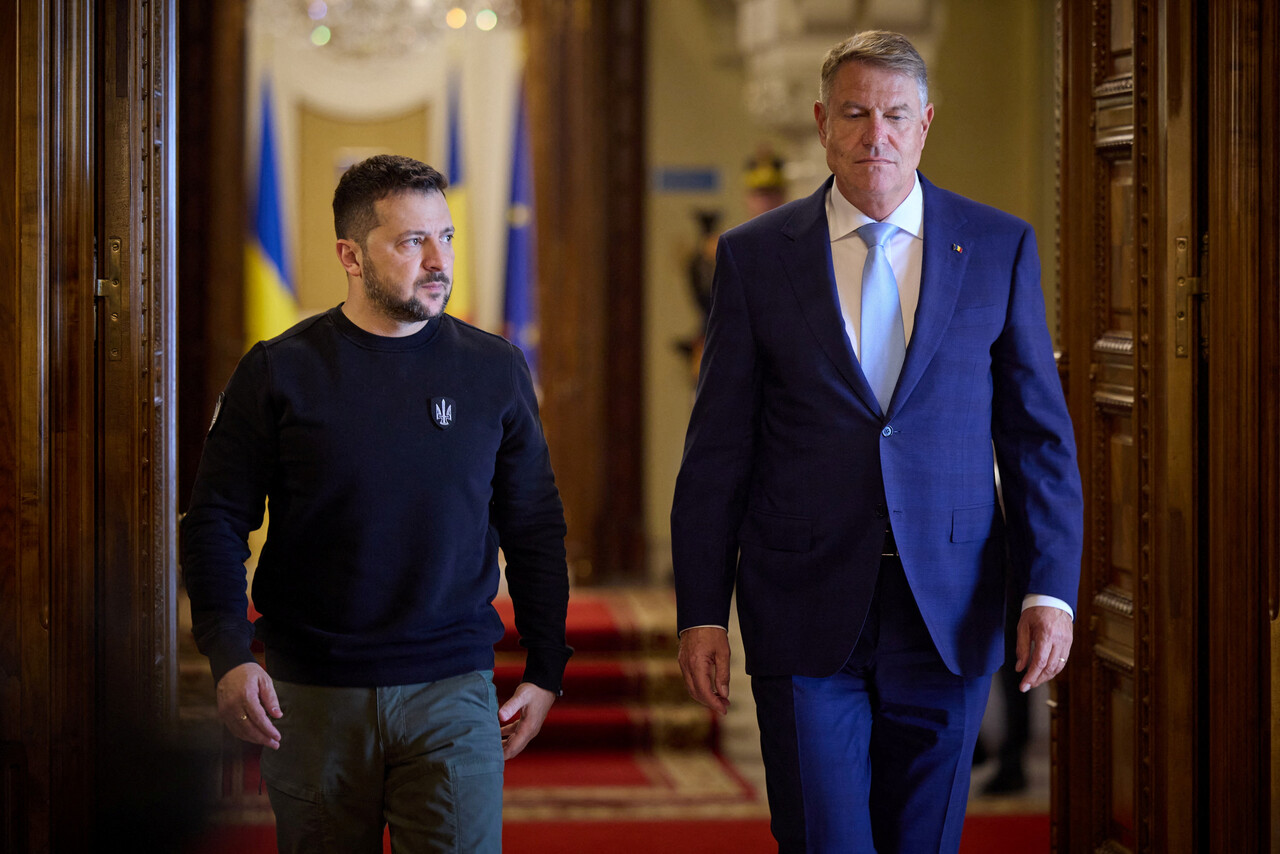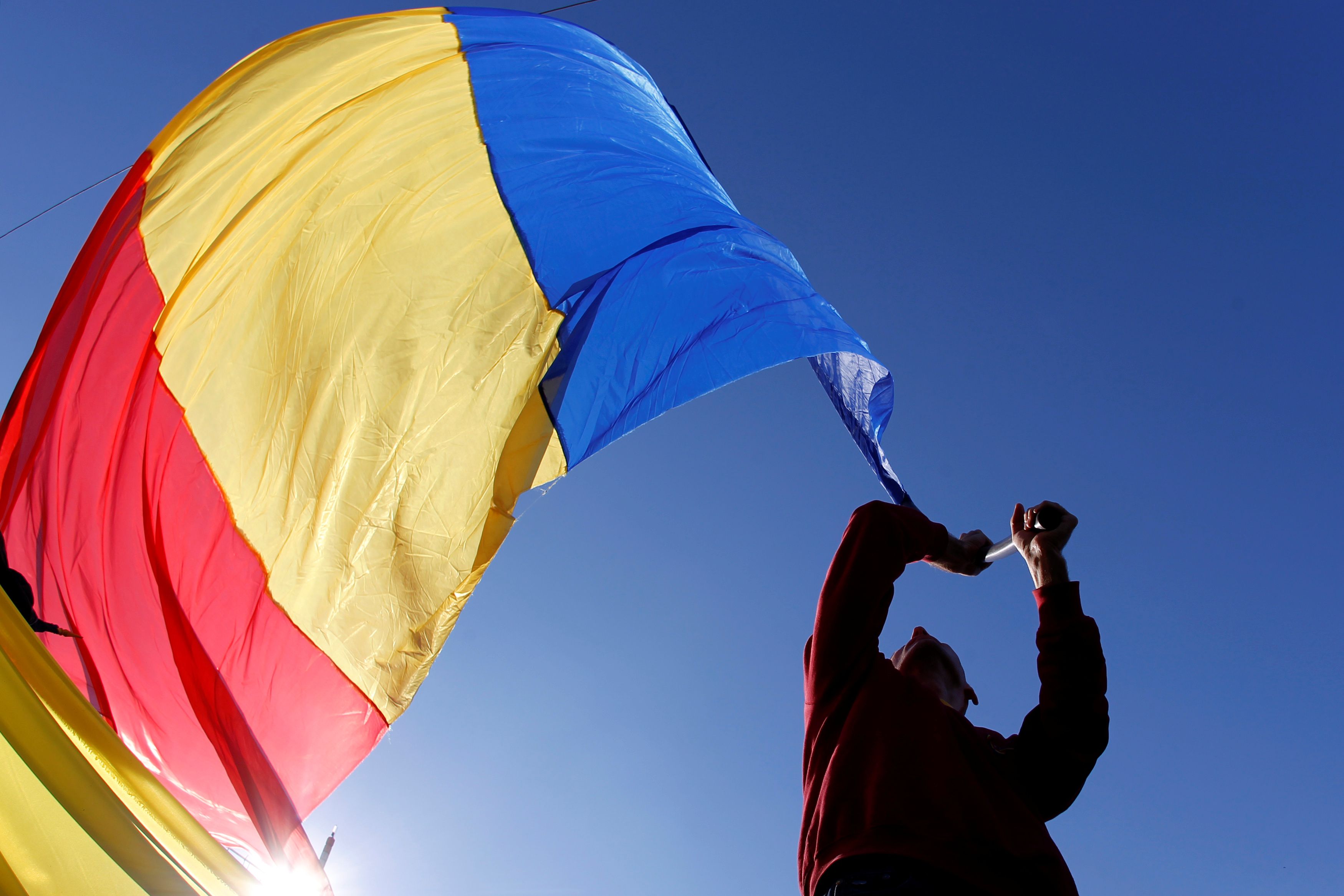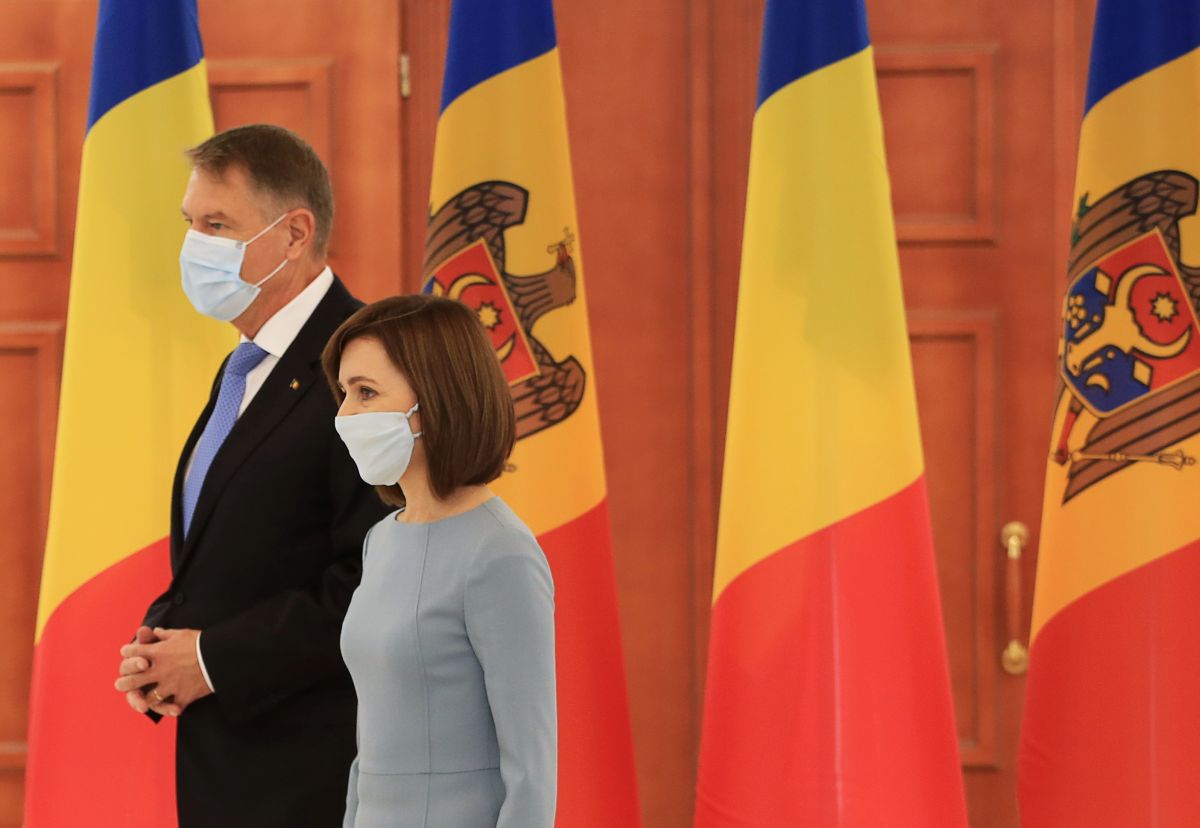Romanian-Ukrainian Relations Intensify
On 10 October, the presidents of Ukraine and Romania, Volodymyr Zelensky and Klaus Iohannis, respectively, signed a declaration of strategic partnership in Bucharest, while on 18 October in Kyiv, the first joint meeting of the Ukrainian and Romanian governments took place. This is the culmination of attempts to overcome long-standing problems in relations. Romania is becoming a key neighbour for Ukraine, helping it with grain exports and also providing military support. The rapprochement is fostered by recent disputes between the authorities in Kyiv and Poland, and the seizure of power in Slovakia by parties sympathetic to Russia. This strengthens Romania’s position in NATO and the European Union.
 UKRAINIAN PRESIDENTIAL PRESS SER / Reuters / Forum
UKRAINIAN PRESIDENTIAL PRESS SER / Reuters / Forum
Strategic Partnership
The presidents pledged to raise mutual relations to the level of a strategic partnership. Iohannis maintained Romania’s readiness to help Ukraine “for as long as necessary”. He also reaffirmed support for its membership of NATO and the start—also with Moldova—of negotiations with the EU at the end of the year. The presidents agreed to double Romania’s transit capacity from 2 million to 4 million tonnes of grain per month and to launch a new rail corridor to Romanian ports via Moldova. Meanwhile, the respective prime ministers Denys Shmyhal and Marcel Ciolacu, signed agreements in Kyiv on the transit of Ukrainian products, the development of border crossings (including the creation of four new ones), the construction of a bridge over the Tisza River, as well as on defence, civil registration, and pharmaceutical trade.
Romania once again raised with Ukraine the issue of the status of its minority. Iohannis signalled an expectation of a change in the Ukrainian law on national minorities, especially the extension of education in the mother tongue. There are about 150,000 Romanians and 250,000 Moldovans living in Ukraine and Romania considers them part of its own national community and protests against calling the literary Romanian language they use “Moldovan”. Ukraine’s concession is the elimination of the “artificial distinction between Romanian and ‘Moldovan’ languages” announced by Zelensky and confirmed by Shmyhal. This arrangement is also supported by the Moldovan parliament’s decision in March 2023 to implement a 2013 Constitutional Court ruling that the name of the country’s official language is “Romanian”.
Breaking Down Distrust
Russia’s invasion and the ongoing war in Ukraine since February 2022 of is prompting the authorities of neighbours Romania and Ukraine to try to break down deep-rooted distrust in relations. The last mutual visits between the presidents were in 2016. The latest rapprochement is progressing slowly. Although a number of Central European leaders arrived in Kyiv with pledges of support as early as March 2022, Iohannis only visited in June that year, joining the French president, the German Chancellor, and the Italian prime minister. Zelensky, meanwhile, did not visit Bucharest until October of this year, although he was in Warsaw in April and in Bratislava, Prague, and Sofia in July. A series of talks between the presidents on the sidelines of multilateral international summits and the visits of the respective prime ministers, Nicolae Ciucă in Kyiv last April and Shmyhal in Bucharest in August, were intended to prepare the breakthrough.
The Romanian authorities’ caution stems from fears about the public’s reaction to a radical turn in relations with Ukraine. Although the country has warmly welcomed war refugees—around 2.4 million, of whom around 125,000 remain in Romania—the population is more cautious about supporting its neighbour compared to the European average. According to a Eurobarometer poll from May and June 2023, 70% of Romanians are in favour of humanitarian aid (compared to an EU average of 88%), taking in refugees (67% vs. 86%), financial support (58% vs. 75%), sanctions on Russia (65% vs. 72%), and provision of military supplies (55% vs. 64%). The anti-Ukrainian attitudes are fuelled by some clergy of the Romanian Orthodox Church, the nationalist Alliance for the Union of Romanians (AUR) party, which, according to various polls, currently has around 20% support, and the only openly pro-Russian politician in the Romanian parliament, the extreme populist and nationalist Senator Diana Şoşoacă, whose S.O.S România party can count on around 5% of the vote. Their excessive rhetoric prompted Zelensky to cancel his speech to the Romanian parliament during his October visit.
Military and Grain Partnership
The Romanian government is withholding details of military support for Ukraine, citing security concerns. It has only confirmed shipments of fuel, helmets, and ammunition worth several million euros during the first weeks of the war. It has also donated small quantities of D-20 howitzers, APR-40 rocket launchers, and TAB-71M transporters (Romanian versions of the Grad and BTR-60), and is an important supplier of artillery ammunition, especially Soviet types, mainly 122mm shells and Grad rockets. Indirectly, the scale of the aid is revealed in Romania’s foreign trade statistics. According to 2022 data, Romtehnica and Romarm—state-owned armaments companies—were, respectively, the first- and fourth-largest exporters to Ukraine. Zelensky confirmed the transfer of 15 military aid packages and that the negotiated 16th would include artillery ammunition and anti-aircraft weapons. Romania has also opened its bases for training of Ukrainian soldiers by NATO, including pilots on F-16 multi-role aircraft, and the country is, after Poland, the next major hub for supplies to Ukraine.
Faced with the Russian blockade of Ukraine’s Black Sea ports, Romania, together with Ukraine and Moldova, the EU, and the U.S., created a forum to coordinate Ukrainian grain exports. It became the main channel for it, with about 30 million tonnes, or around 60% of the total volume, exported through ports on the Danube and in Constanţa since the beginning of the war. To facilitate transport on the Danube, Romania liberalised access for third-country vessels to navigate the Chilia, a border branch of the river, and suspended state protests raised since 2014 against Ukraine's use of the Bystroe channel for navigation and proceeded to amicably settle a dispute from this spring over its deepening. It has also increased the number of barge pilots by recalling additional retired military officers into service. Thanks to €100 million provided by the European Commission (EC), Romania is increasing the capacity of the Sulina, the main Danube branch, by, among other things, installing signalling for night navigation. In view of the attacks on the Ukrainian ports of Reni and Izmail on the Ukrainian bank of the Chilia, Romania has strengthened its air defences over the lower Danube; Russian drone debris has been falling on its territory but has not caused damage so far.
Romania has minimised the possibility of importing grain into its own territory, while avoiding inflaming the dispute with Ukraine. Along with Bulgaria, Poland, Hungary, and Slovakia, the country prompted the EC to impose a ban in Spring 2023 on Ukrainian cereal imports into the EU. Although the authorities in Bucharest signalled their dissatisfaction with its lifting in September, they decided, unlike Hungary and Poland, not to maintain a unilateral embargo. Instead, they agreed with Ukraine to suspend imports for 30 days until “the matter is cleared up”, followed by the possibility of importing under licence directly for farmers and processors —but not dealers—if they can demonstrate a shortage of cereals on the market.
Conclusions
Relations between Ukraine and Romania are burdened by their mutual history. However, the Russian full-scale invasion in 2022 has prompted both states to make another attempt to overcome the problems. The commitment to this by consensus of the presidents and prime ministers testifies to the determination of the parties. However, the sustainability of the improvement in relations depends on the ability of both countries to implement the signed agreements. Ukraine’s war situation and the considerable inertia of the Romanian administration may cause problems with the development of border infrastructure. It may also be a challenge for Ukraine to regulate the rights of the Romanian minority, and those of other EU countries, especially Hungary, to the satisfaction of the authorities of those states so that it does not indirectly encourage the perpetuation of Russification, at which the Ukrainian legislation was aimed. In addition, a slowing down of Romania’s rapprochement with Ukraine may be facilitated by the end of Iohannis’ second term in 2024 and by parliamentary elections, after which the anti-Ukrainian AUR is likely to become the second-strongest party.
Due to the special ties that Poland has with both Romania and Ukraine, the Romanian-Ukrainian rapprochement is positive. On the other hand, it is in Poland’s interest to ensure that this does not cause—especially in the context of the irritations between the authorities in Warsaw and Kyiv over grain imports—Poland’s voice to weaken in NATO and the EU on aid issues or the future reconstruction of Ukraine. At the same time, an improvement in Romanian-Ukrainian relations may be conducive to the Bucharest authorities in promoting EU integration also for Ukraine, and not only for Moldova, which they treat as a second Romanian nation-state.





